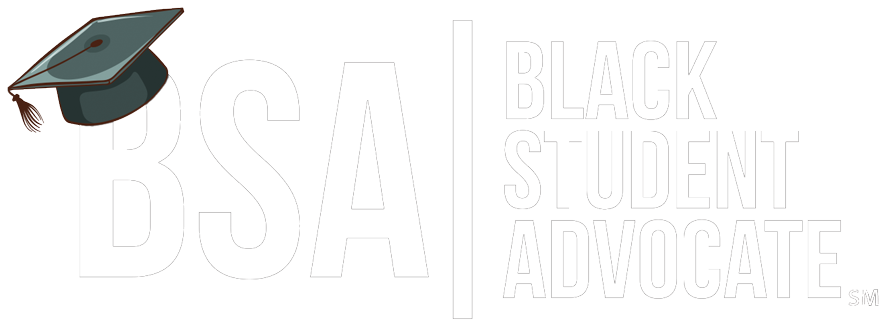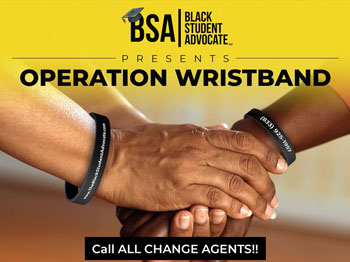Education is often touted as the great equalizer, a pathway toward opportunity and empowerment. Yet, for many students of color, the classroom can be a place where biases—sometimes subtle, sometimes overt—shape their experiences, opportunities, and outcomes. Even teachers with the best intentions can unconsciously harbor prejudices that affect how they perceive, interact with, and support students.
Understanding and addressing racial bias in the classroom is essential not just for fairness, but for creating a learning environment where every child can thrive. The Black Student Advocate Network believes that education should lift all students, not inadvertently perpetuate inequities. In this blog, we explore what racial bias in education looks like, how it manifests, and actionable steps teachers, administrators, and communities can take to combat it.
1. Understanding Racial Bias in the Classroom
Racial bias in education occurs when students are treated differently based on their race or ethnicity. These biases can be explicit, such as making assumptions about a student’s abilities, or implicit, where unconscious beliefs influence teacher expectations and classroom interactions.
Manifestations of racial bias include:
- Assuming students of color are less capable academically.
- Disproportionate disciplinary actions against minority students.
- Limited access to advanced classes or enrichment opportunities.
- Lowered expectations in classroom participation or leadership.
Research shows that even subtle biases can accumulate over time, impacting student confidence, academic performance, and overall school experience. For instance, a teacher who unconsciously calls on white students more frequently may unintentionally discourage students of color from participating actively.
The Black Student Advocate Network emphasizes that recognizing bias is the first critical step. Educators must reflect on their assumptions, observe their patterns of interaction, and confront uncomfortable truths about the role of race in shaping classroom dynamics.
2. How Teacher Bias Affects Students
Bias doesn’t just affect grades—it affects students’ self-esteem, sense of belonging, and future opportunities. Studies indicate that when students sense lowered expectations due to their racial identity, it can lead to:
- Academic underperformance: Internalizing teachers’ assumptions can hinder students’ motivation and engagement.
- Behavioral labeling: Students of color may be unfairly perceived as disruptive, leading to disproportionate disciplinary measures.
- Emotional distress: Experiences of microaggressions, stereotypes, or unfair treatment contribute to stress, anxiety, and disengagement.
- Reduced access to resources: Bias can influence who is encouraged to pursue gifted programs, leadership roles, or advanced coursework.
The Black Student Advocate Network stresses that addressing bias is crucial not only for student equity but also for nurturing well-rounded, confident learners. Recognizing how bias manifests allows educators to intervene before it affects student trajectories.
3. Recognizing Implicit Bias in Yourself and Your School
Implicit bias is the unconscious attitudes or stereotypes that influence our perceptions, decisions, and interactions. Unlike overt racism, it often goes unnoticed, yet it shapes classroom dynamics in significant ways.
Ways teachers may unknowingly demonstrate bias:
- Calling on certain students more frequently.
- Grading subjectively based on behavior or effort perception rather than objective criteria.
- Interpreting assertiveness differently depending on a student’s race.
- Using disciplinary actions inconsistently.
To combat implicit bias, The Black Student Advocate Network recommends:
- Self-assessment: Tools like the Implicit Association Test (IAT) can help teachers identify unconscious prejudices.
- Reflection exercises: Journaling or peer discussions about classroom interactions can reveal patterns.
- Data review: Analyzing disciplinary actions, grades, and participation metrics by race can uncover inequities.
By actively seeking to identify these hidden biases, schools can create a foundation for more equitable teaching practices.
4. Strategies to Mitigate Racial Bias in Teaching Practices
Awareness alone is not enough; it must be paired with concrete strategies. Here are actionable steps educators can implement:
- Equitable classroom participation: Intentionally call on all students and provide varied ways for them to contribute.
- Culturally responsive teaching: Integrate diverse perspectives and materials into the curriculum to reflect all students’ experiences.
- Objective assessment standards: Create clear rubrics and assessment criteria to minimize subjective judgment.
- Restorative disciplinary practices: Replace punitive measures with strategies that focus on understanding and resolving conflict.
- Professional development: Attend workshops and training on equity, anti-racism, and culturally responsive pedagogy.
The Black Student Advocate Network believes that these strategies not only reduce bias but also foster an inclusive and empowering learning environment where students feel valued and understood.
5. Involving Parents, Guardians, and Communities
Combatting racial bias in education is not the sole responsibility of teachers—it requires a collaborative effort. Engaging families and communities helps ensure that students’ cultural identities are recognized and respected.
Effective practices include:
- Hosting community forums to discuss equity and inclusion.
- Inviting parents to provide feedback on school policies, teaching methods, and curriculum design.
- Collaborating with local organizations to provide mentorship, tutoring, and enrichment programs.
- Creating open channels for students to express concerns about bias and discrimination.
By involving the broader community, schools can reinforce a culture of accountability and create a network of support that amplifies students’ voices.
6. Measuring Progress and Accountability
Sustainable change requires regular monitoring and accountability. Schools should implement metrics to evaluate their progress in reducing racial bias in the classroom.
Measures may include:
- Tracking disciplinary actions and academic outcomes by race.
- Conducting student surveys about classroom climate and experiences of inclusion.
- Reviewing teacher performance with a focus on equitable teaching practices.
- Setting clear goals for diversity, equity, and inclusion at the school level.
The Black Student Advocate Network encourages institutions to embrace transparency. By sharing findings and progress with all stakeholders, schools can demonstrate a commitment to meaningful, long-term change.
Conclusion
Racial bias in the classroom is a deeply rooted issue, but it is not insurmountable. Recognizing it, addressing it, and committing to equitable practices can transform schools into environments where all students thrive. Educators, parents, and communities must work together to identify biases, implement culturally responsive strategies, and hold institutions accountable.
The Black Student Advocate Network champions this cause, advocating for classrooms that empower every student, regardless of race. Beyond good intentions lies the responsibility to act—because equity in education is not optional; it is essential.
By confronting biases, amplifying diverse voices, and fostering inclusive practices, we can ensure that schools are not only places of learning but also spaces where every child can reach their fullest potential.







Share This Page